I shared how we flushed our $70k SBA loan down the toilet.
So why stop there?
With mostly only Amazon success stories on the internet, here’s a look at our failure. We can’t be the only ones to have run into trouble while trying to grow this business.
What I didn’t share about the SBA loan story was the product itself. But before I get into the product, take a look at my business plan projections I submitted to the bank.
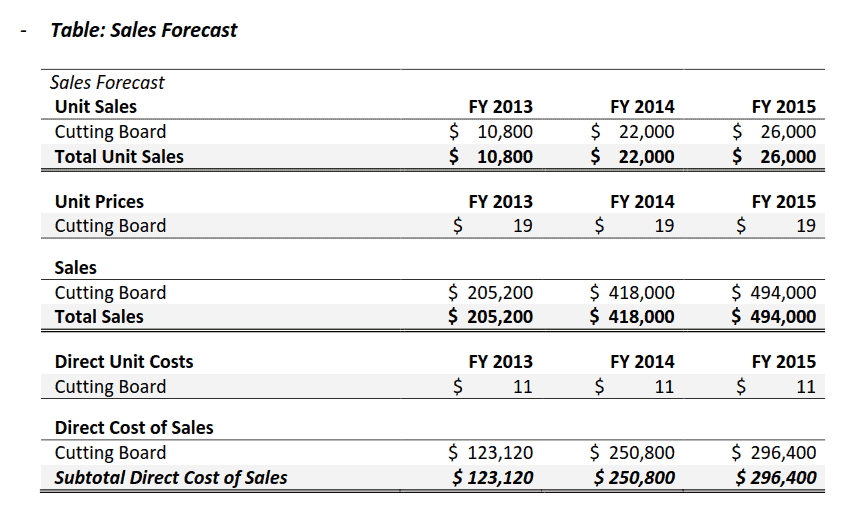
I figured, we could start making money immediately and be profitable. We didn’t even know about Amazon at this time. These wild projections were based on selling to wholesale accounts and getting into retail stores in our very first year.
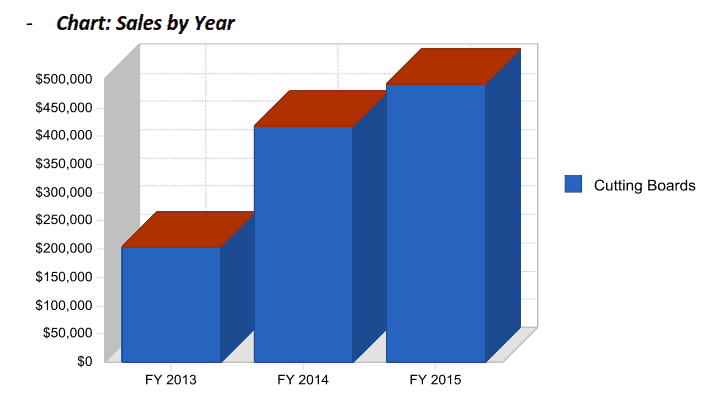

Expected highlights include:
- sales of $200k in the first year
- no loss whatsoever because I knew it was going to the next big thing
- $500k in sales by year 3
Introducing the next gen cutting board
Yes.
Cutting boards.
But not just any cutting board, we were going to be first ones to introduce a silicone cutting board.
We were certain it was going to be category killer.
It clearly solved a problem over traditional cutting boards.
- “Antibacterial” concept. Roll up and sanitize in the microwave.
- Heat resistant up to 485F. Can use as a baking tray or trivet.
- Color coded to prevent cross contamination.
- Won’t dull your knives.
Looking back, these photos were pretty good!
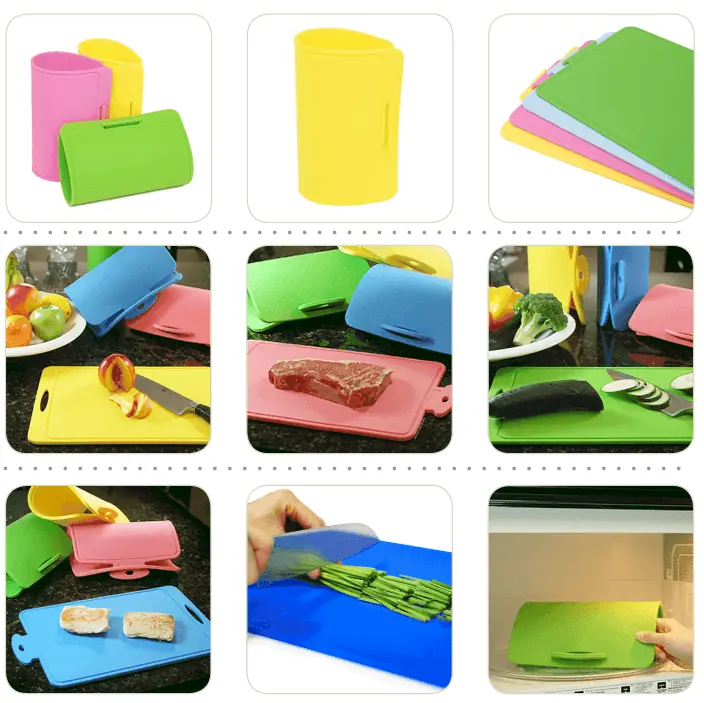
Because it was like this behind the scenes.
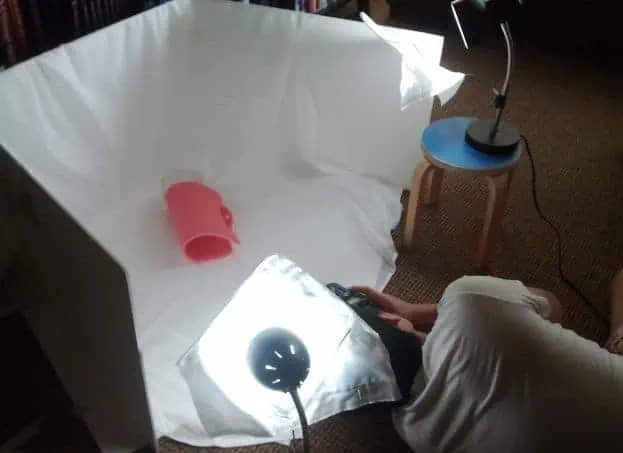
Getting the packaging designed
With the images on hand, we found a local design agency to do the packaging for us.
I personally find it to be atrocious.
They basically put the photos I provided them, along with a stock photo into a random grid position and charged us $2,000.
Looks like it was done in MS Word.
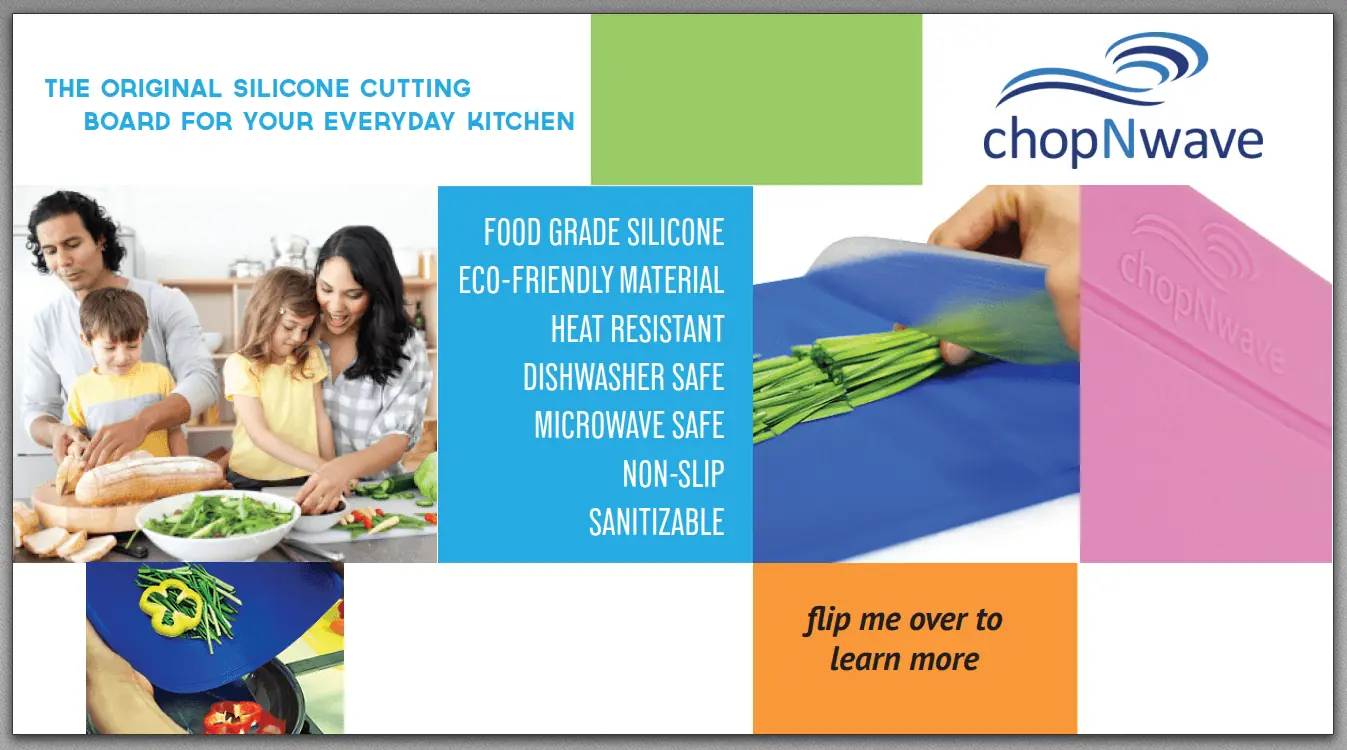
But being our first product, I was determined to push ahead.
Experiencing Chinese quality control
We ordered 50 samples in order to go to the next round of development – quality and NSF testing.
The first batch of samples came and they were 100% defective.
A cutting board is supposed to be flat and smooth, but our samples had tiny dimples all over it like some sort of skin disease. There was no way we could accept this.
With no experience, we didn’t know how to vet suppliers and we didn’t even know about Alibaba back then. We were just doing things on the fly without any proper process.
I announced a sudden 1 week break off work and flew out to Shenzhen to meet with the supplier. Looking back, I should have known.
The factory was a small dingy place. The walls and ceiling were bare concrete, place was covered in dust.
Today, I know that these are the factories that need to be avoided at all cost as there is no QC.
After a couple of months going back and forth, we get our final samples and it is still not perfect.
Those darn dimples.
At this point I’m just fed up and gave it the OK. I just want to launch the product and become a millionaire. You know that feeling, right?
Time to send for testing and certification
We send a bunch of cutting boards to NSF for testing and certification to claim our cutting boards are the best in the world.
A week later, we get a call that the cutting board failed its very first test. In fact, all 100% of the cutting boards failed.
The test?
A simple hardness test to see if the cutting board can withstand standard knife pressure.
Our cutting board failed looking like this.
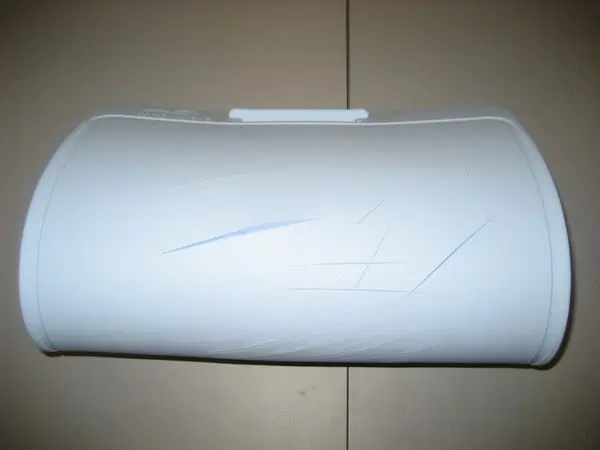
Doh.
Throw another $1,000 onto the burning pile of money.
Stupid mistake after stupid mistake
For over 1 year, we didn’t even think about the most basic of basic requirements. We were so in love with the new idea that we completely ignored the basic reason a cutting board exists.
To support a knife.
Everything else is secondary.
This was in 2012 by the way.
7 years later, silicone cutting boards are being sold on Amazon, but the funny thing is that most have been wiped out.
They aren’t selling well because of the exact issue we ran into.
Here’s a photo somebody posted as a review. Looks familiar.
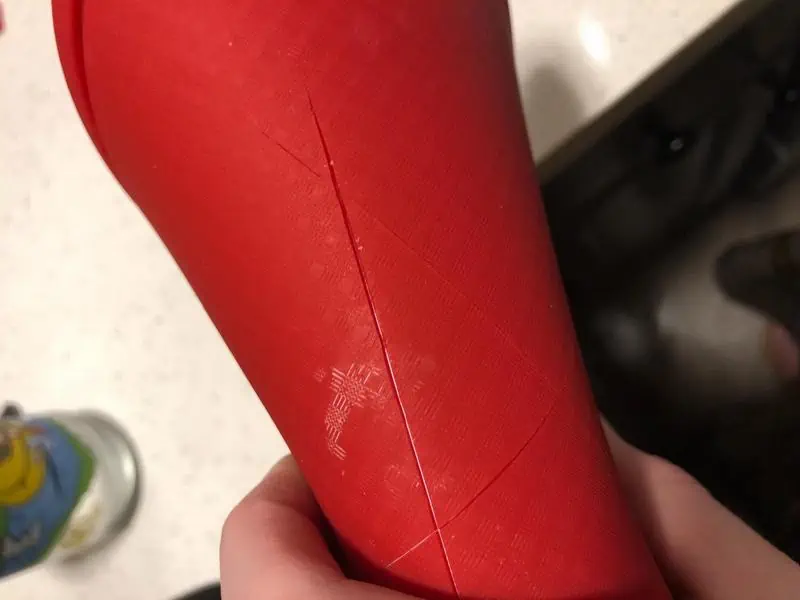
6 hard lessons learned
1) We made another bad mistake with a design agency.
There are many talented designers on upwork who can do superb work at affordable prices.
2) Getting the product tested saved us.
Although I felt that spending money on NSF testing was a waste, my wife was right. She pushed for it and the results confirmed the project had to be killed. It saved us money as we did not have to order thousands of units that no one would buy.
If your product requires testing and certification to remain compliant, do it.
Making sure you have accurate and up to date FDA certifications, exemptions etc is critical.
3) Create a product backwards.
- See if there’s demand.
- See if the numbers make sense to make and then sell.
- Make a cheap MVP (Minimal Viable Product).
- Get lots of honest feedback.
- Negotiate small minimums to start.
- See if it sells with marketing, email automation, good images, PPC.
- Only then make a big order.
4) Every mistake in business costs money.
At school or in a job, mistakes will cost a grade or a slap on the wrist at worse. In business, it’s all money. And it costs more money to fix the problem. We blew $70k on mistakes.
5) Business projections are useless.
You don’t know what you don’t know.
Business projections are pie in the sky numbers. Nobody knows until you actually get started.
Surround yourself with people that have gone through similar situations. Or at least business minded people who won’t discourage you.
6) Being first to market can be risky.
Creating a unique product comes with a lot of risks as the product has not been proven.
If done right, you become associated with the new category.
But there are always competitors and deeper pockets, waiting for you to make all the mistakes before they dive in and dominate.
More failures?
This was our very first product. This was our very first failure.
The good thing is that we didn’t give up and let this dictate our future. We took the lessons from it and applied it to the next product.
We aren’t perfect and we still make mistakes, but that comes with the territory of trying to build a long term business.
I’ll continue to share more failures, successes as well as details on how we run certain aspects of our business like Amazon inventory management, sharing confidential data with employees and trying to grow outside of Amazon.
Comments
Related Posts

10 Profitable Product Categories for Amazon Affiliates 2025
What you’ll learn Amazon is a favorite for experienced and…

Unlock the Secret to a Profitable Automated Amazon Store: How to Build a Hands-Free Income Stream
Ever dreamed of running a profitable Amazon business while sipping…

Master Amazon New Restricted Keywords: A Seller’s Guide to Success
Changes to Amazon’s restricted keywords list have taken a lot…





Leave a Reply